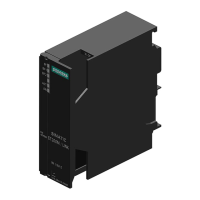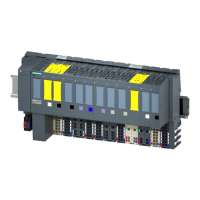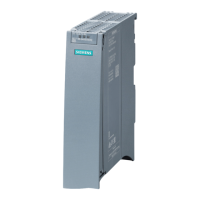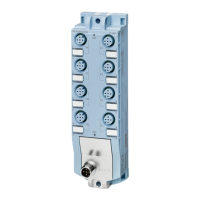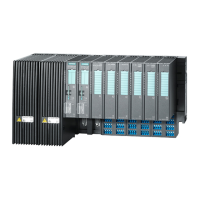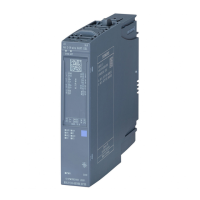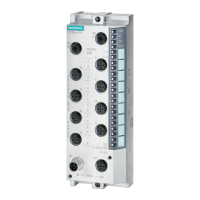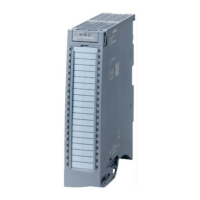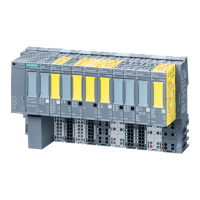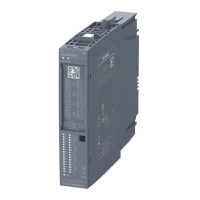Contents
xvi
ET 200S Distributed I/O System
EWA-4NEB 780602402-12
6-1 Grouping of input modules in a single byte 6-6.......................
6-2 Grouping of digital output modules in a single byte 6-7................
6-3 Grouping of motor starters within a byte 6-8.........................
6-4 Setup of the ET 200S 6-8.........................................
6-5 Configuring the ET 200S on PROFIBUS DP 6-11.....................
6-6 LED display on the IM151-1 interface module 6-12....................
6-7 LED display on the power module 6-14..............................
6-8 LED Display on the Digital Electronic Modules 6-14....................
6-9 LED Display on the Analog Electronic Modules 6-15...................
6-10 LED display on the 1COUNT 24 V/100 kHz 6-15......................
6-11 LED display on the 1COUNT 5 V/500 kHz 6-16.......................
6-12 LED display on the EM 1SSI 6-17...................................
6-13 LEDs on the EM 1STEP 5 V/204 kHz 6-17...........................
6-14 LED display on the 2PULSE 6-18...................................
6-15 LEDs on the 1POS INC/Digital, 1POS SSI/Digital, 1POS INC/Analog,
1POS SSI/Analog 6-19............................................
6-16 LEDs on the 1SI 3964/ASCII, 1SI Modbus/USS 6-20..................
6-17 LEDs on the 4 IQSENSE electronic module 6-21......................
6-18 Start information of the OB 40: which event has triggered
a process interrupt with digital input modules 6-24.....................
6-19 Start information of the OB 40: which event has triggered
a process interrupt with analog input modules 6-24....................
6-20 Structure of slave diagnostic data 6-29...............................
6-21 Structure of the ID-related diagnosis for the ET 200S
with the IM151-1 BASIC 6-34.......................................
6-22 Structure of the ID-related diagnosis for the ET 200S with the IM151-1
STANDARD, IM151-1 FO STANDARD and IM151-1 HIGH FEATURE 6-35
6-23 Structure of the module status for the ET 200S
with the IM151-1 BASIC 6-36.......................................
6-24 Structure of the module status for ET 200S with the IM151-1 STANDARD;
IM151 FO STANDARD and IM151 HIGH FEATURE 6-37..............
6-25 Structure of the channel-specific diagnosis for the ET 200S
with IM151-1 BASIC 6-38..........................................
6-26 Structure of the channel.specific diagnosis for the ET 200S
with the IM151-1 STANDARD, IM151-1 FO STANDARD
and IM151-1 HIGH FEATURE 6-39.................................
6-27 Structure of the interrupt status of the interrupt section 6-49............
6-28 Structure of bytes x+4 to x+7 for diagnostic interrupt 6-50..............
6-29 Structure as of byte x+8 for diagnostic frame 6-51.....................
6-30 Example of a Diagnostic Interrupt 6-52...............................
6-31 Example of a diagnostic interrupt (continued) 6-53.....................
6-32 Structure as of byte x+4 for hardware interrupt (digital input) 6-54.......
6-33 Structure as of byte x+4 and byte x+5 for hardware interrupt
(analog input) 6-54................................................
6-34 Structure starting at byte x+4 for remove/insert interrupts 6-55..........
6-35 Configuring the ET 200S on PROFINET IO 6-60......................
6-36 LED display on the IM151-3 PN interface module 6-61.................
6-37 Structure of the channel diagnostics for the ET 200S
with the IM151-3 PN 6-69..........................................
8-1 Block diagram for the IM151-1 BASIC interface module 8-9...........
8-2 Block diagram for the IM151-1 STANDARD interface module 8-12.......
8-3 Block diagram for the IM151-1 FO ST ANDARD interface module 8-16...
8-4 Block diagram for the IM151--1 HIGH FEATURE interface module 8-20..
8-5 Block diagram for the IM151-3 PN interface module 8-24...............
8-6 Position of the module slot for the MMC card on the IM151-3 PN 8-27...

